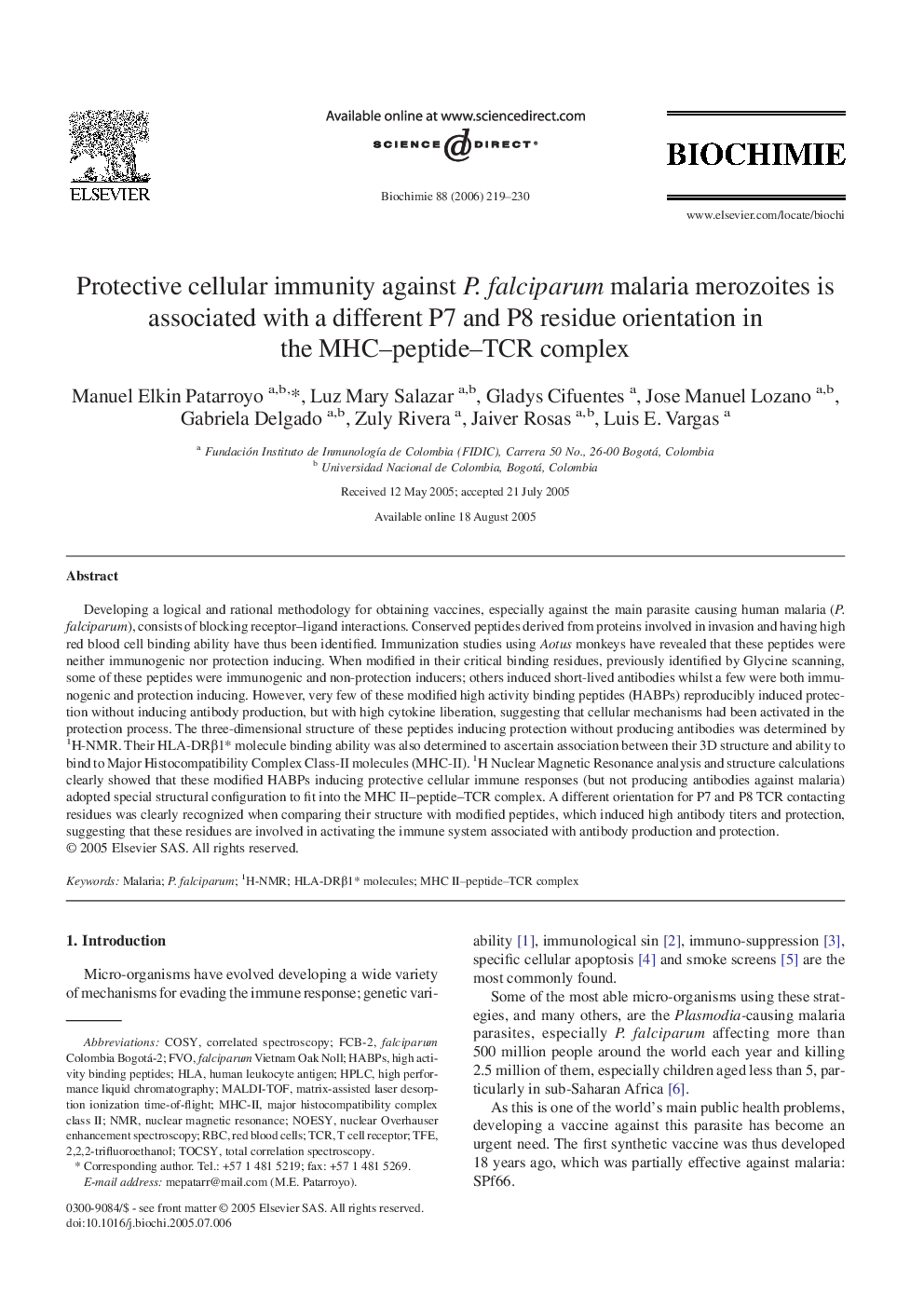| کد مقاله | کد نشریه | سال انتشار | مقاله انگلیسی | نسخه تمام متن |
|---|---|---|---|---|
| 1953407 | 1057270 | 2006 | 12 صفحه PDF | دانلود رایگان |

Developing a logical and rational methodology for obtaining vaccines, especially against the main parasite causing human malaria (P. falciparum), consists of blocking receptor–ligand interactions. Conserved peptides derived from proteins involved in invasion and having high red blood cell binding ability have thus been identified. Immunization studies using Aotus monkeys have revealed that these peptides were neither immunogenic nor protection inducing. When modified in their critical binding residues, previously identified by Glycine scanning, some of these peptides were immunogenic and non-protection inducers; others induced short-lived antibodies whilst a few were both immunogenic and protection inducing. However, very few of these modified high activity binding peptides (HABPs) reproducibly induced protection without inducing antibody production, but with high cytokine liberation, suggesting that cellular mechanisms had been activated in the protection process. The three-dimensional structure of these peptides inducing protection without producing antibodies was determined by 1H-NMR. Their HLA-DRβ1* molecule binding ability was also determined to ascertain association between their 3D structure and ability to bind to Major Histocompatibility Complex Class-II molecules (MHC-II). 1H Nuclear Magnetic Resonance analysis and structure calculations clearly showed that these modified HABPs inducing protective cellular immune responses (but not producing antibodies against malaria) adopted special structural configuration to fit into the MHC II–peptide–TCR complex. A different orientation for P7 and P8 TCR contacting residues was clearly recognized when comparing their structure with modified peptides, which induced high antibody titers and protection, suggesting that these residues are involved in activating the immune system associated with antibody production and protection.
Journal: Biochimie - Volume 88, Issue 2, February 2006, Pages 219–230